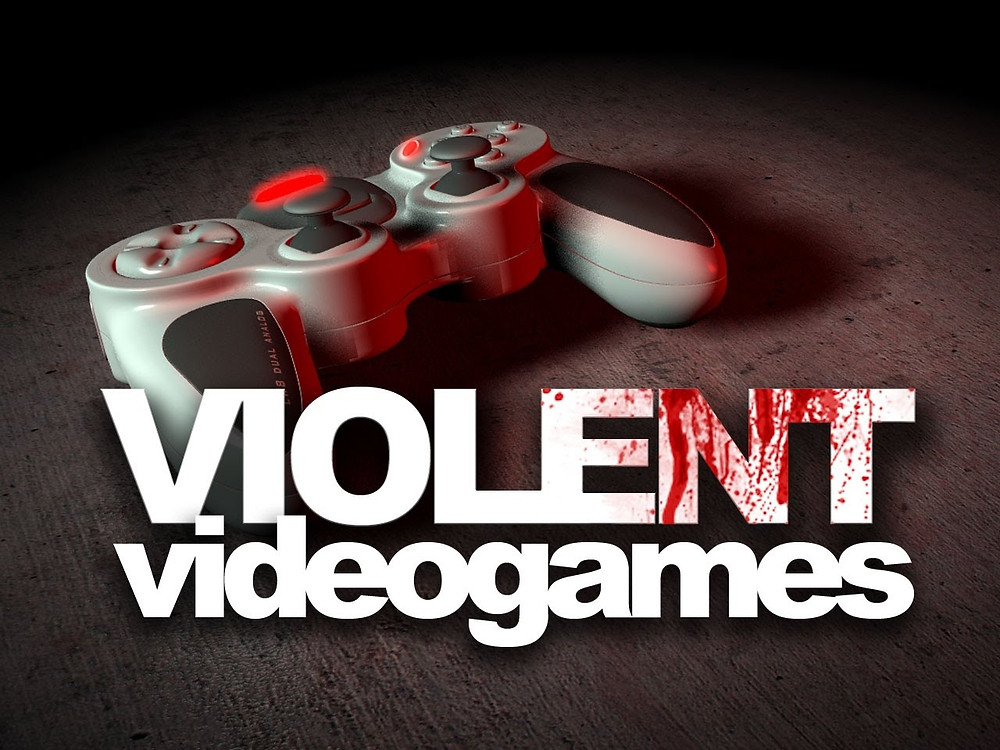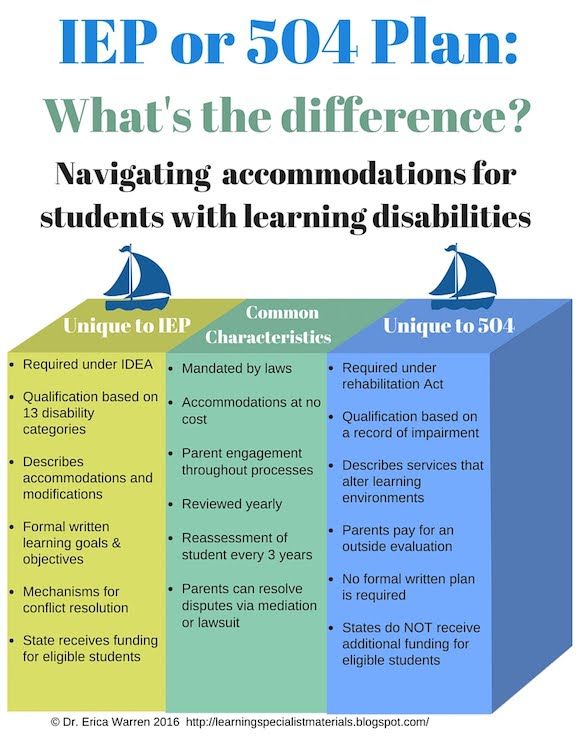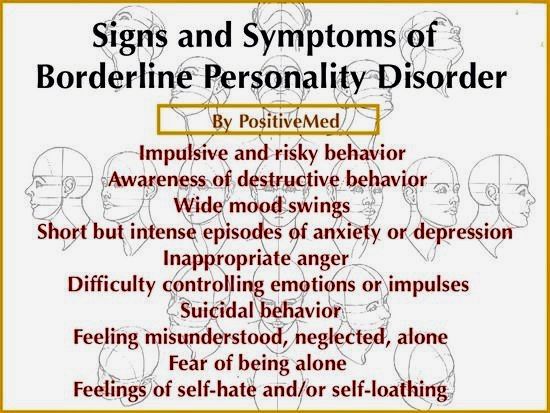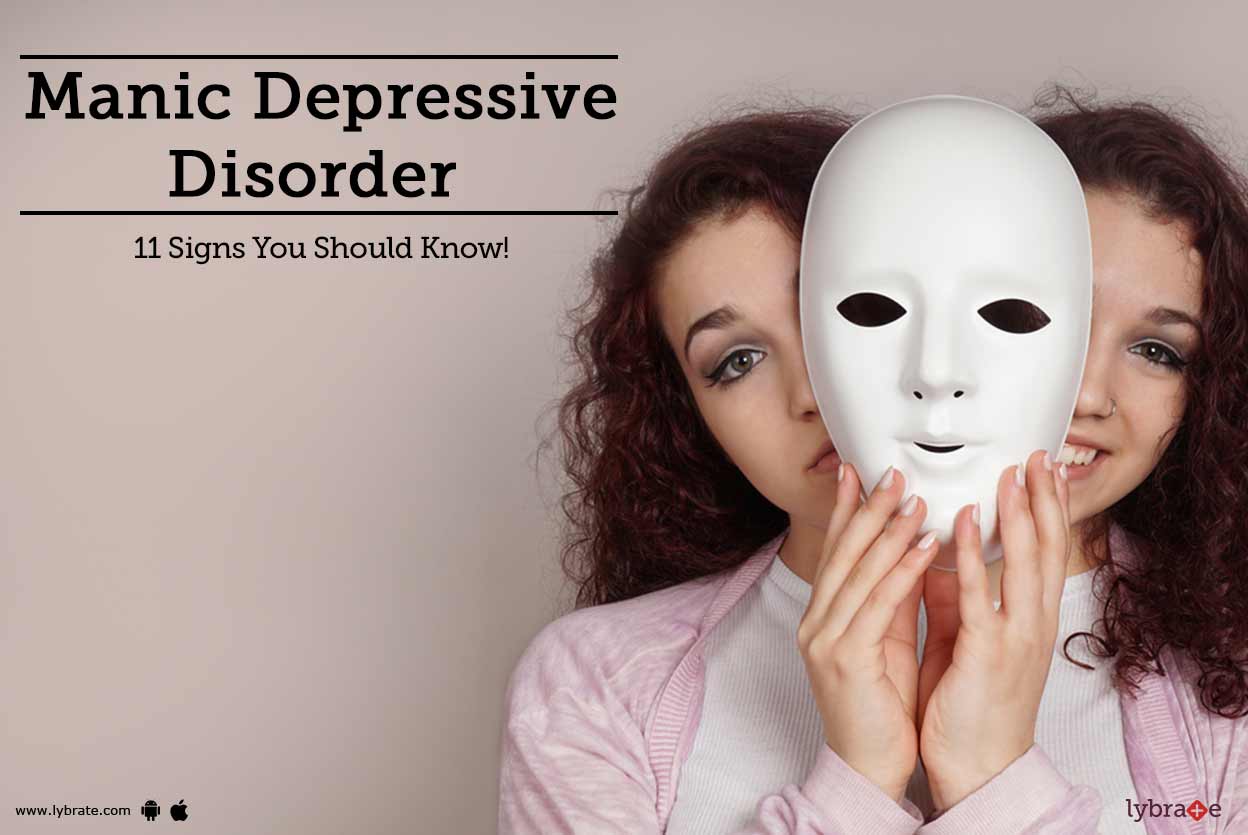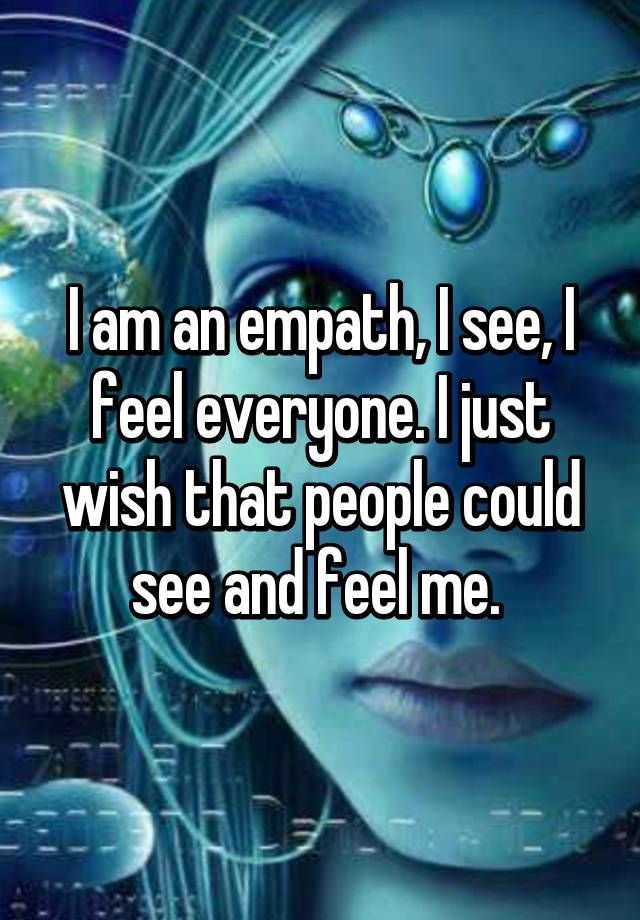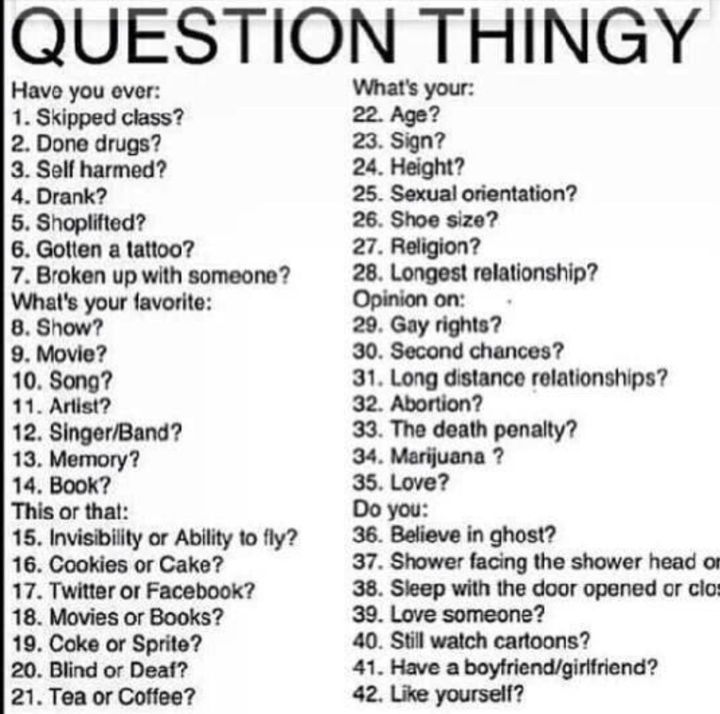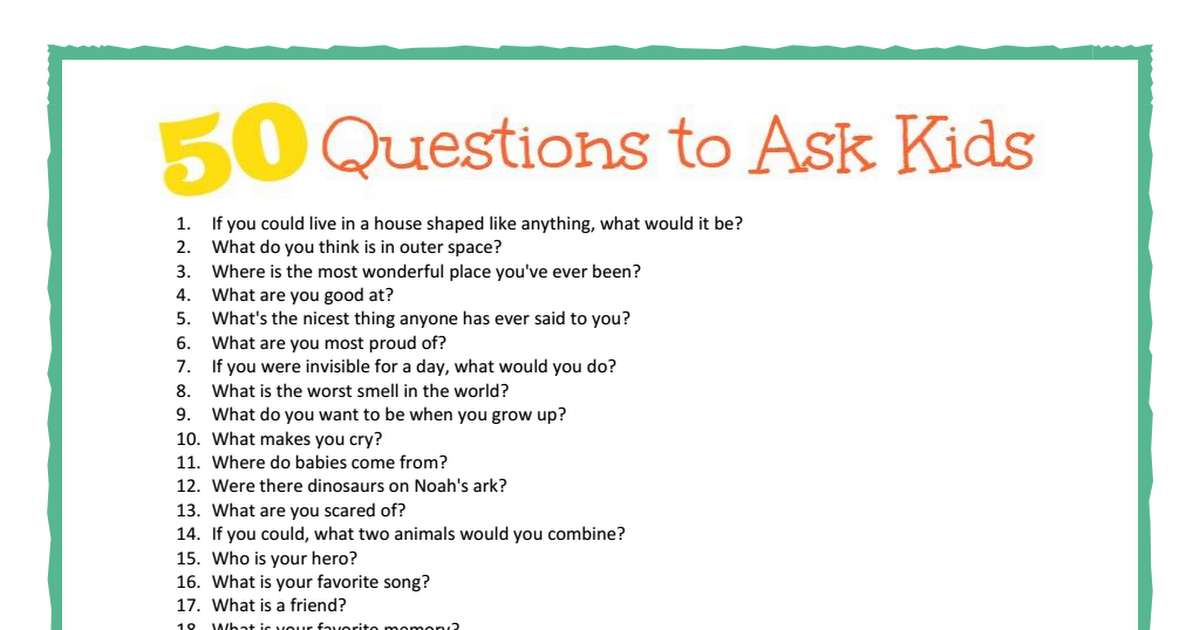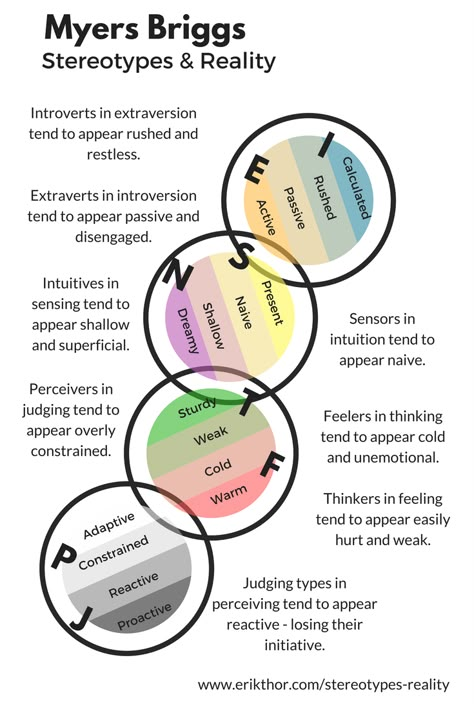Video games desensitize to real violence
Video Games Desensitize to Real Violence
New research has found exposure to violent video games can desensitize individuals to real-life violence. According to the investigators, this is first documented finding that video-games can alter physiological responses typically aroused by real violence.
Past research revealed that exposure to violent video games increases aggressive thoughts, angry feelings, physiological arousal and aggressive behaviors, and decreases helpful behaviors. Previous studies also found that more than 85 percent of video games contain some violence, and approximately half of video games include serious violent actions.
Nicholas Carnagey, an Iowa State psychology instructor and research assistant, and ISU Distinguished Professor of Psychology Craig Anderson collaborated on the study with Brad Bushman, a former Iowa State psychology professor now at the University of Michigan, and Vrije Universiteit, Amsterdam.
They authored a paper titled “The Effects of Video Game Violence on Physiological Desensitization to Real-Life Violence,” which was published in the current issue of the Journal of Experimental Social Psychology. In this paper, the authors define desensitization to violence as “a reduction in emotion-related physiological reactivity to real violence.”
Their paper reports that past research — including their own studies — documents that exposure to violent video games increases aggressive thoughts, angry feelings, physiological arousal and aggressive behaviors, and decreases helpful behaviors. Previous studies also found that more than 85 percent of video games contain some violence, and approximately half of video games include serious violent actions.
The methodology Their latest study tested 257 college students (124 men and 133 women) individually. After taking baseline physiological measurements on heart rate and galvanic skin response — and asking questions to control for their preference for violent video games and general aggression — participants played one of eight randomly assigned violent or non-violent video games for 20 minutes. The four violent video games were Carmageddon, Duke Nukem, Mortal Kombat or Future Cop; the non-violent games were Glider Pro, 3D Pinball, 3D Munch Man and Tetra Madness.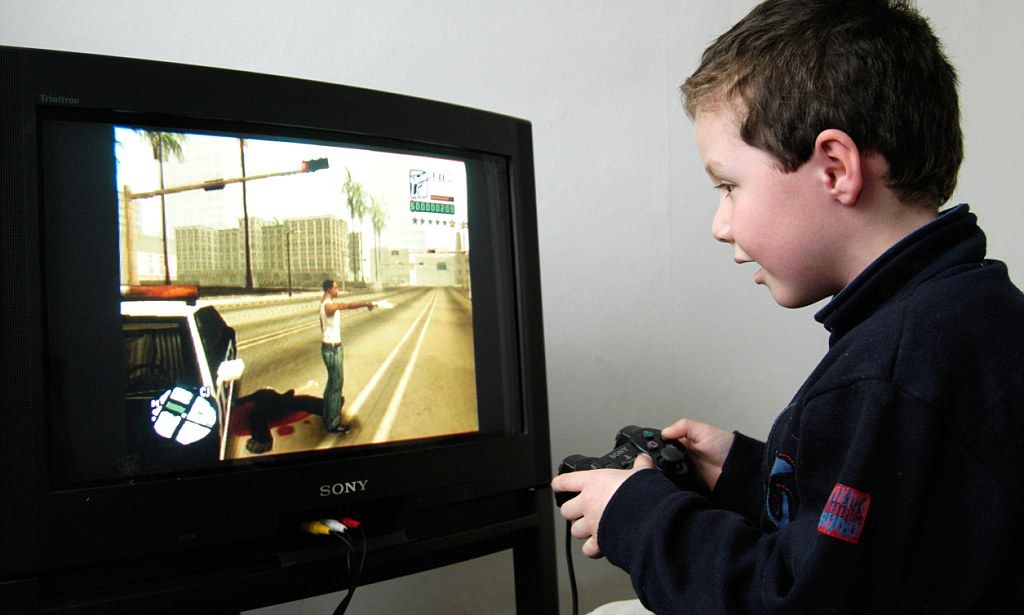
After playing a video game, a second set of five-minute heart rate and skin response measurements were taken. Participants were then asked to watch a 10-minute videotape of actual violent episodes taken from TV programs and commercially-released films in the following four contexts: courtroom outbursts, police confrontations, shootings and prison fights. Heart rate and skin response were monitored throughout the viewing.
The physical differences When viewing real violence, participants who had played a violent video game experienced skin response measurements significantly lower than those who had played a non-violent video game. The participants in the violent video game group also had lower heart rates while viewing the real-life violence compared to the nonviolent video game group.
“The results demonstrate that playing violent video games, even for just 20 minutes, can cause people to become less physiologically aroused by real violence,” said Carnagey. “Participants randomly assigned to play a violent video game had relatively lower heart rates and galvanic skin responses while watching footage of people being beaten, stabbed and shot than did those randomly assigned to play nonviolent video games.
“Participants randomly assigned to play a violent video game had relatively lower heart rates and galvanic skin responses while watching footage of people being beaten, stabbed and shot than did those randomly assigned to play nonviolent video games.
“It appears that individuals who play violent video games habituate or ‘get used to’ all the violence and eventually become physiologically numb to it.”
Participants in the violent versus non-violent games conditions did not differ in heart rate or skin response at the beginning of the study, or immediately after playing their assigned game. However, their physiological reactions to the scenes of real violence did differ significantly, a result of having just played a violent or a non-violent game. The researchers also controlled for trait aggression and preference for violent video games.
The researchers’ conclusion They conclude that the existing video game rating system, the content of much entertainment media, and the marketing of those media combine to produce “a powerful desensitization intervention on a global level.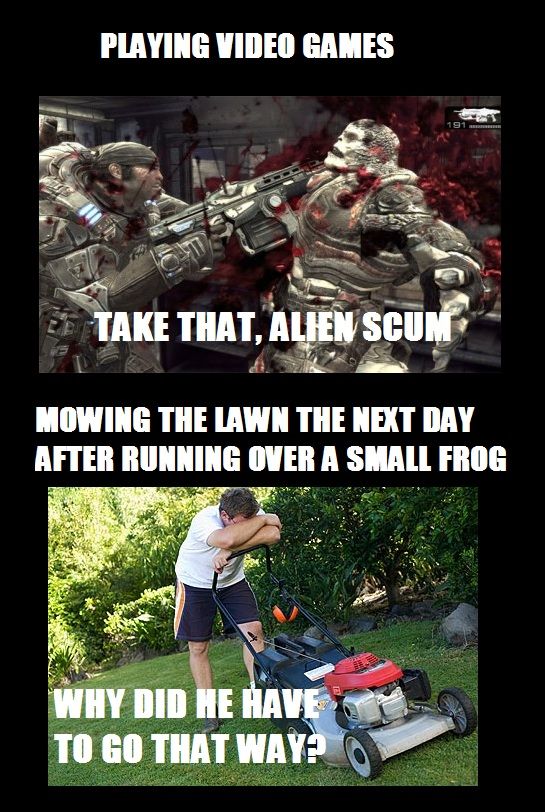 ”
”
“It (marketing of video game media) initially is packaged in ways that are not too threatening, with cute cartoon-like characters, a total absence of blood and gore, and other features that make the overall experience a pleasant one,” said Anderson. “That arouses positive emotional reactions that are incongruent with normal negative reactions to violence. Older children consume increasingly threatening and realistic violence, but the increases are gradual and always in a way that is fun.
“In short, the modern entertainment media landscape could accurately be described as an effective systematic violence desensitization tool,” he said. “Whether modern societies want this to continue is largely a public policy question, not an exclusively scientific one.”
The researchers hope to conduct future research investigating how differences between types of entertainment — violent video games, violent TV programs and films — influence desensitization to real violence. They also hope to investigate who is most likely to become desensitized as a result of exposure to violent video games.
“Several features of violent video games suggest that they may have even more pronounced effects on users than violent TV programs and films,” said Carnagey.
Source: Iowa State University
Video Games Desensitize to Real Violence
New research has found exposure to violent video games can desensitize individuals to real-life violence. According to the investigators, this is first documented finding that video-games can alter physiological responses typically aroused by real violence.
Past research revealed that exposure to violent video games increases aggressive thoughts, angry feelings, physiological arousal and aggressive behaviors, and decreases helpful behaviors. Previous studies also found that more than 85 percent of video games contain some violence, and approximately half of video games include serious violent actions.
Nicholas Carnagey, an Iowa State psychology instructor and research assistant, and ISU Distinguished Professor of Psychology Craig Anderson collaborated on the study with Brad Bushman, a former Iowa State psychology professor now at the University of Michigan, and Vrije Universiteit, Amsterdam.
They authored a paper titled “The Effects of Video Game Violence on Physiological Desensitization to Real-Life Violence,” which was published in the current issue of the Journal of Experimental Social Psychology. In this paper, the authors define desensitization to violence as “a reduction in emotion-related physiological reactivity to real violence.”
Their paper reports that past research — including their own studies — documents that exposure to violent video games increases aggressive thoughts, angry feelings, physiological arousal and aggressive behaviors, and decreases helpful behaviors. Previous studies also found that more than 85 percent of video games contain some violence, and approximately half of video games include serious violent actions.
The methodology Their latest study tested 257 college students (124 men and 133 women) individually. After taking baseline physiological measurements on heart rate and galvanic skin response — and asking questions to control for their preference for violent video games and general aggression — participants played one of eight randomly assigned violent or non-violent video games for 20 minutes. The four violent video games were Carmageddon, Duke Nukem, Mortal Kombat or Future Cop; the non-violent games were Glider Pro, 3D Pinball, 3D Munch Man and Tetra Madness.
The four violent video games were Carmageddon, Duke Nukem, Mortal Kombat or Future Cop; the non-violent games were Glider Pro, 3D Pinball, 3D Munch Man and Tetra Madness.
After playing a video game, a second set of five-minute heart rate and skin response measurements were taken. Participants were then asked to watch a 10-minute videotape of actual violent episodes taken from TV programs and commercially-released films in the following four contexts: courtroom outbursts, police confrontations, shootings and prison fights. Heart rate and skin response were monitored throughout the viewing.
The physical differences When viewing real violence, participants who had played a violent video game experienced skin response measurements significantly lower than those who had played a non-violent video game. The participants in the violent video game group also had lower heart rates while viewing the real-life violence compared to the nonviolent video game group.
“The results demonstrate that playing violent video games, even for just 20 minutes, can cause people to become less physiologically aroused by real violence,” said Carnagey. “Participants randomly assigned to play a violent video game had relatively lower heart rates and galvanic skin responses while watching footage of people being beaten, stabbed and shot than did those randomly assigned to play nonviolent video games.
“Participants randomly assigned to play a violent video game had relatively lower heart rates and galvanic skin responses while watching footage of people being beaten, stabbed and shot than did those randomly assigned to play nonviolent video games.
“It appears that individuals who play violent video games habituate or ‘get used to’ all the violence and eventually become physiologically numb to it.”
Participants in the violent versus non-violent games conditions did not differ in heart rate or skin response at the beginning of the study, or immediately after playing their assigned game. However, their physiological reactions to the scenes of real violence did differ significantly, a result of having just played a violent or a non-violent game. The researchers also controlled for trait aggression and preference for violent video games.
The researchers’ conclusion They conclude that the existing video game rating system, the content of much entertainment media, and the marketing of those media combine to produce “a powerful desensitization intervention on a global level.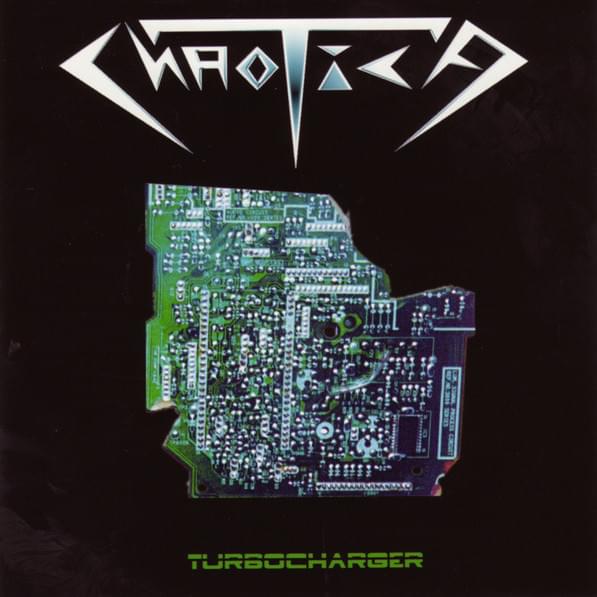 ”
”
“It (marketing of video game media) initially is packaged in ways that are not too threatening, with cute cartoon-like characters, a total absence of blood and gore, and other features that make the overall experience a pleasant one,” said Anderson. “That arouses positive emotional reactions that are incongruent with normal negative reactions to violence. Older children consume increasingly threatening and realistic violence, but the increases are gradual and always in a way that is fun.
“In short, the modern entertainment media landscape could accurately be described as an effective systematic violence desensitization tool,” he said. “Whether modern societies want this to continue is largely a public policy question, not an exclusively scientific one.”
The researchers hope to conduct future research investigating how differences between types of entertainment — violent video games, violent TV programs and films — influence desensitization to real violence. They also hope to investigate who is most likely to become desensitized as a result of exposure to violent video games.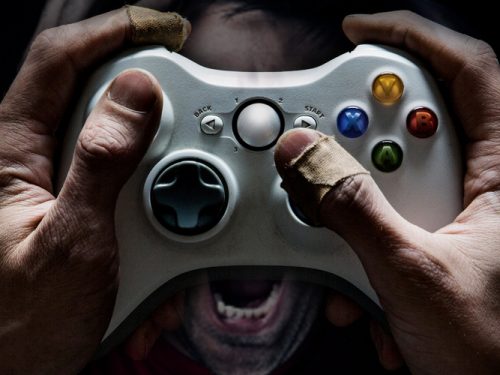
“Several features of violent video games suggest that they may have even more pronounced effects on users than violent TV programs and films,” said Carnagey.
Source: Iowa State University
they try to accuse the entertainment industry of mass murders - Games on DTF
From children's fairy tales and comics to violent video games.
9126 views
Commenting on the recent tragedy in Parkland, the US President made it clear that he considers the entertainment industry to be the main culprit. According to Donald Trump, 19-year-old Nicholas Cruz, who committed the massacre, must have been influenced either by video games or violent films.
Maybe we should do something about what teenagers watch and how they watch it. This also applies to video games. I hear more and more that the level of violence in video games is shaping the way young people think.
Films follow. They are so cruel. Nevertheless, children can watch pictures where there are murders, as long as there are no sex scenes.
Maybe it's worth introducing a rating system just for that.
Donald Trump, US President
These statements led to a recent meeting between the President of the United States and representatives of the gaming industry and caused a wide discussion in the American press. Among others, Trevor Burrus, a spokesman for a think tank called Cato University, joined the controversy. The analyst delved into the history of accusations of games - and works of art in general - of violence taking place in the real world.
Search for the culprit
According to Burrus, this point of view originates in the distant past - at least in the 19th century. As an example, he cites a fairy tale by the Brothers Grimm called "How the Children Played the Butcher", published in 1812.
One day the children saw how the father slaughtered a piglet. When they began to play, one child said to another: “Come on, you will be a piglet, and I will be a butcher,” after which he took a knife and stuck it in his brother’s throat.
Their mother was washing the youngest child in the upstairs room at the time. Hearing the screams of the children, she ran downstairs, saw what had happened, pulled the knife out of her son's throat and stuck it in the heart of the child who pretended to be the butcher.
She ran back upstairs to check on the baby, but by then the baby had already drowned. The woman was in such horror and despair that she did not allow herself to be comforted by the servants and hanged herself. When her husband returned from the field and saw all this, he immediately died of grief. End.
Brothers Grimm
At the end of the nineteenth century, it was customary to blame "pulp fiction" for manifestations of cruelty among young people. The researcher cites two articles from the New York Times - for 1890 and for 1896. The author of the first confidently states that the criminal "sought to imitate the heroes of tabloid literature." The second tells of a young robber who stole a gold watch and fired at his pursuers with a pistol. According to the publication, "the guy's friends said that he was a victim of tabloid literature." Reading about violence leads to violence - apparently in 189No one doubted this.
Probably, the society very quickly began to suspect that the police were just looking for a scapegoat. As early as 1909 a journalist for The Times writes rather bluntly:
The days when the police saw in the pulp fiction dangerous textbooks from the "school of crimes" are coming to an end. They found a new target for attack. Now they say that the moving picture machine, if operated in a dishonest and irresponsible way, can turn easily suggestible youth onto the path that leads to prison, even more effectively than crime fiction.
The New York Times
Simultaneously with the American police in Russia, Emperor Nicholas II began to fight against cinema. Usually his harsh resolutions were related to riots, or other undesirable incidents in cinemas, but the emperor never missed an opportunity to criticize the very essence of cinema - "unnecessary, and even harmful entertainment. " For example, in the same 1909, he writes the following about cinemas:
There can be no benefit from them. They generally have a detrimental effect, accustoming the public to bad habits. It is necessary to assign a gendarme to each such theater in order to constantly monitor suspicious visitors.
Nicholas II, Emperor of All Russia
"Ponizovaya freemen", 1908
Burrus relates that because of the belief that feature films can be "used for evil purposes", in the US, cinema was not covered by the First Amendment to the Constitution to prohibit restrictions on freedom of speech or the press - until 1952 years old.
In between film censorship, activists turned to radio broadcasts—in 1941, a certain Dr. Mary Preston conducted a study according to which a large number of children were "acutely addicted" to crime radio shows. According to the doctor, she heard the following from a ten-year-old child: “Murder is the best thing. Shooting and gangsters are in second place. I really liked the way vampires sucked blood."
Cinema, comics, radio
At one time, not only films and plays, but also comics were blamed for the cruelty of teenagers. The image of comics promoting "cruelty, sadism, crime, beatings and promiscuity" was popularized by another psychiatrist, Dr. Frederick Wertem. In 1948, the Saturday Review published his article in which the doctor reported that the thirteen-year-old teenager who killed his comrade claimed that he had "read every comic book he could get his hands on."
This fact, according to Werthem, destroyed the theory that comic book lovers "do not imitate what they read." Books and articles linking the Doctor's violent tendencies to his love of comics were widely circulated and led to the creation of an organization that placed many restrictions on the comic book industry.
Frederic Werthem reads comics
Wertham became famous primarily for his crusade against comics, but he did not forget about other forms of art.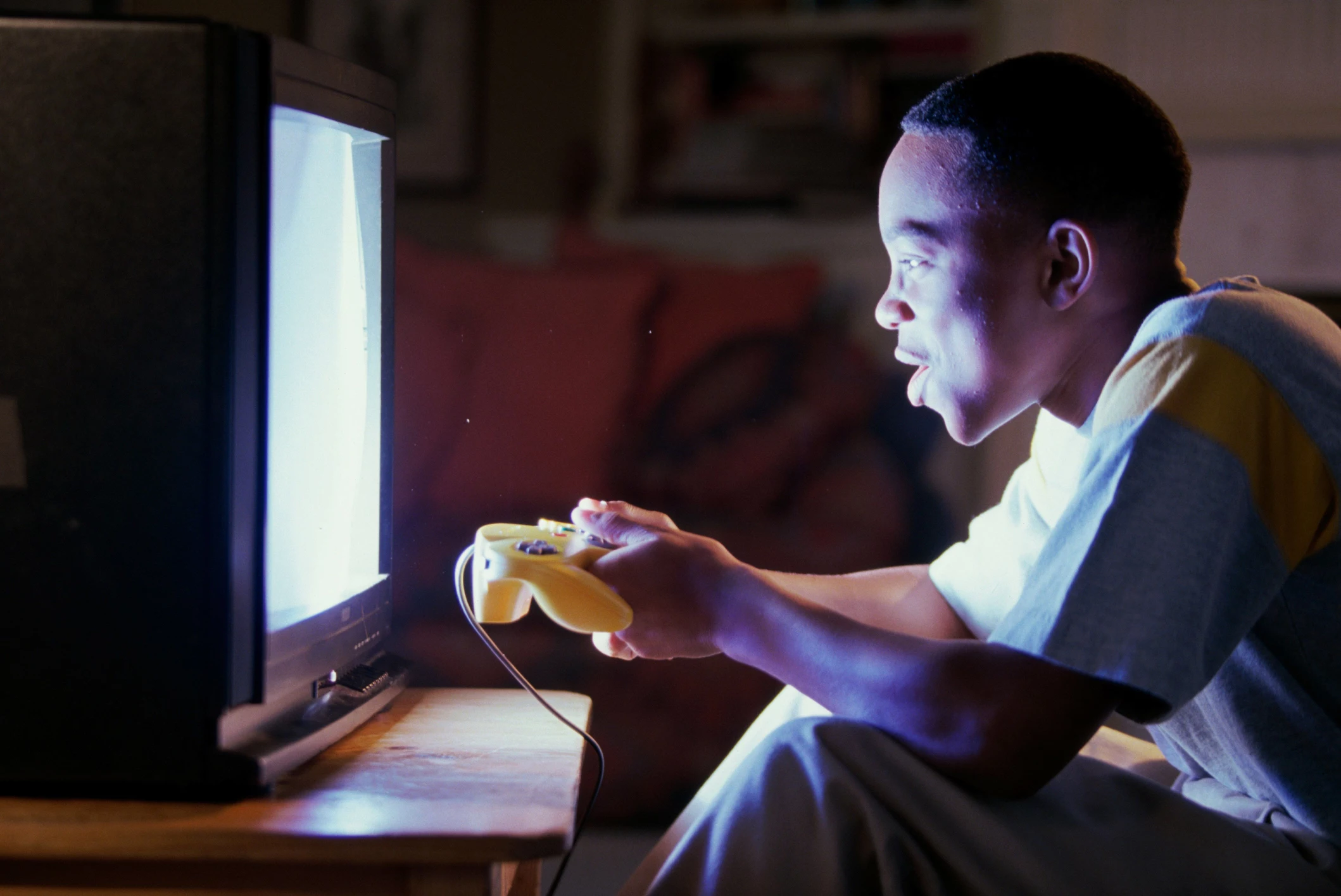 The odious psychiatrist called television a "school of crime" and spoke unflatteringly about cinema. He stated that if he had to face a violent teenager in a dark alley, he would prefer "that he did not watch Bonnie and Clyde."
The odious psychiatrist called television a "school of crime" and spoke unflatteringly about cinema. He stated that if he had to face a violent teenager in a dark alley, he would prefer "that he did not watch Bonnie and Clyde."
In our enlightened age, such discussions also take place. For example, after the story about the attack on the cinema, which showed the film "The Dark Knight Rises", a column was published in the progressive edition of The New Yorker, in which the author argues that the perpetrator could be inspired by the Joker and Bane - although it is stipulated that "A movie can't make you kill." The Wall Street Journal writer goes further, stating that "violent films have the power to destabilize, desensitize, make things worse."
After the same sad events, the famous director Peter Bogdanovich gave an interview to the Hollywood Reporter, in which he directly blamed the creators of violent films for what had happened.
Their movies are full of corpses.
It makes the audience think it's not terrible. The amount of violence on screen has increased tenfold. It's almost pornography. No, it's pornography. It got out of hand. I understand that this can drive someone crazy.
Peter Bogdanovich, director
However, in general, apart from special cases like the "Rise of the Legend" incident, public complaints about violent films have dropped dramatically in recent times. Society, in the words of the author of The New York Times, has found "a new object for attack." In modern times, violent video games have taken the place of comics and radio shows.
Video games and shooting
Against the backdrop of recent events, Colin Campbell, columnist for Polygon, wrote an article listing all known video game mass murderers.
Eric Harris and Dylan Klebold, who carried out the Columbine Massacre in 1999, were known to be avid Doom players. 14-year-old Michael Carneel, who shot three schoolchildren in 1997, was fond of games - on this basis, the parents of the victims unsuccessfully tried to sue video game companies.
There are far less clear cut cases: Adam Lanza, who shot 20 children and six adults at Sandy Hook in 2012, “spent a lot of time in the basement playing all sorts of games.” His favorite game was Dance Dance Revolution, probably the most innocuous interactive entertainment possible. And the shooter who killed 32 people in Virginia in 2007 was completely "accused" of being fond of video games by mistake - after some time, his roommate stated that he had never seen the killer playing Counter-Strike, in fans which the press recorded it.
The two teenagers who shot the motorcyclist claimed they were addicted to GTA 3. Members of the murderous Oakland gang played the same part of the famous series. Since then, the glory of the game that inspires crime has been fixed for GTA - you can remember at least the Russian “GTA gang”.
Finally, it is known that James Holmes, responsible for the already mentioned incident at the screening of "The Rebirth of a Legend", and the notorious Norwegian terrorist Anders Breivik played video games. The latter, he said, played World of Warcraft "to relax" and Call of Duty to increase his marksmanship.
The latter, he said, played World of Warcraft "to relax" and Call of Duty to increase his marksmanship.
Campbell estimates that of the 100 largest school massacres, 40 occurred in the United States, 33 of them between 1980 and 2018, at a time when we can already talk about the possible impact of video games on the psyche. Only in four cases out of 33 killers turned out to be fans of video games. Considering the fact that video games are extremely popular entertainment among young people, 4 out of 33 is clearly too small a percentage to seriously talk about a trend.
If you've been interested in games for even a few years, you're no doubt tired of the same arguments. But they are worth repeating. Games are the main entertainment for many young people. If a young person commits a crime, then there is a high probability that he once played video games.
Colin Campbell, Polygon, journalist
Unwavering convictions
However, neither the statistics nor the scientific research that refutes this theory can rid society of the conviction that infatuation with violent video games can lead to violence in real life. Of course, politicians are trying to shift the responsibility for violence in the real world to video games most actively.
Of course, politicians are trying to shift the responsibility for violence in the real world to video games most actively.
Some substantiate this belief with conclusions that may seem logical, such as Kentucky Governor Matt Bevin, former State Duma deputy Oleg Mikheev, or Senator Elena Mizulina.
There are games that give players the opportunity to earn points - like students in school! Here you will get extra points for finishing off the one who is lying and begging for help. These so-called "games" are pushed down our throats under the pretext of "freedom of speech". This is garbage. It's worse than pornography.
Matt Bevin, Governor of Kentucky
There are two circumstances that affect the 100% fixation of information in the player's brain: firstly, the threshold of aggression rises and sensitivity to cruelty and suffering decreases, and secondly, a repeated return to the game fixes its images in the mind as an integral part of life .
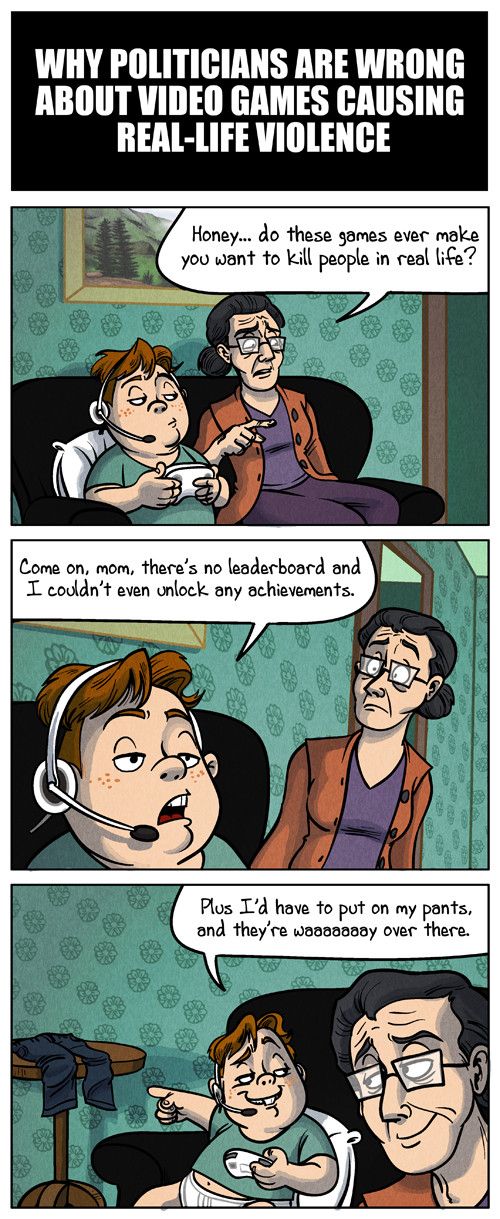
Oleg Mikheev, ex-deputy of the State Duma of the Russian Federation
Shooting games erase the psychological barrier between reality and the virtual world, they were originally invented for the US military as part of the training process. The child is fully convinced that this is only a game in which he has several lives. Parents need to pay special attention to such hobbies of children.
Elena Mizulina, senator
And others, like Wayne Lapierre, vice president of the National Rifle Association, or like Trump himself, simply trust irrational emotions.
In this country there is a heartless, corrupt and defiling industry that sells and sows violence - violence against its own people. She does this through sinful, violent video games with titles like Bulletstorm, Grand Theft Auto, Mortal Kombat, and Splatterhouse. Or here's another one - Kindergarten Killers.
It has been available online for ten years now!
Wayne Lapierre Vice President National Rifle Association USA
Violence and its glorification in video games must be stopped - it creates monsters!
Donald Trump, US President
In the words of these politicians one can hear an unshakable confidence that scientific research will clearly not dissuade them. It can be assumed that in this way politicians are simply trying to find simple answers to complex questions, avoid responsibility for their own mistakes and distract the population from really important problems. Anyway, in the case of video games, many of them most likely believe what they say to one degree or another. More importantly, they are believed by a significant part of society.
Sooner or later, the current fighters against violent games will be replaced by a new generation that will not experience panic fear of interactive entertainment. Video games will be left alone, just as books, comics, radio shows and ordinary children's games have already been left alone, which at one time so impressed the author of the fairy tale “How Children Played Butcher”.
Video games will be left alone, just as books, comics, radio shows and ordinary children's games have already been left alone, which at one time so impressed the author of the fairy tale “How Children Played Butcher”.
#games #opinions #long
How video games really affect violence
Tragedies involving teenagers are often blamed on computer games. Many believe that shooters and fighting games provoke violence. Studies say that games reduce stress and help socialize
What conclusions did different researchers draw about the influence of video games:
- Violent video games immediately provoke aggressive behavior
- Games exacerbate aggression in hostile teenagers
- Teenagers who study worse like to spend time with video games
- Violent video games affect children more than family and peer problems
- The short-term impact of games is much smaller than originally thought
- It's not games that make children violent, it's domestic violence and bullying at school
- Only 0.
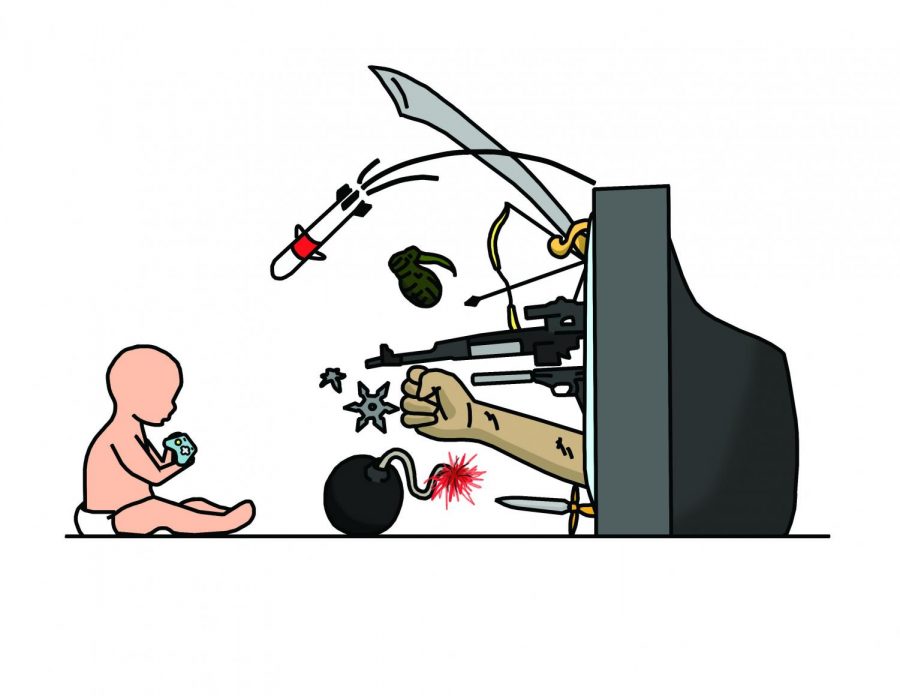 4% of different forms of aggression can be caused by violent video games
4% of different forms of aggression can be caused by violent video games - Popular game releases distract gamers from crime
- Violent video games improve stress tolerance
- Games help teenagers maintain relationships with peers
Read more about these studies below.
Audio version of the material:
Your browser does not support audio player .
Now you can not only read but also listen to RBC Trends materials. Search for and subscribe to the Sounds Like a Trend podcast on Apple Podcasts, Yandex.Music, Castbox, or any other platform where you listen to podcasts.
Prohibit and restrict
Russian deputies several times proposed to fight against video games by law. The reasons for such proposals were the massacres that were organized by teenagers in schools. For example, in Moscow in 2014, in Kerch in 2018 and in Kazan in 2021.
US politicians have also voiced restrictive initiatives. In 1993, Senator Joe Lieberman and Herb Cole staged a series of congressional hearings over Mortal Kombat and Night Trap, deeming them too violent. After lengthy litigation, game makers had to adopt an age-labeled rating system for their products. Also, companies began to warn buyers about scenes of violence and other problematic content in games (for example, drinking alcohol or sex scenes).
In 1993, Senator Joe Lieberman and Herb Cole staged a series of congressional hearings over Mortal Kombat and Night Trap, deeming them too violent. After lengthy litigation, game makers had to adopt an age-labeled rating system for their products. Also, companies began to warn buyers about scenes of violence and other problematic content in games (for example, drinking alcohol or sex scenes).
Since 1994, the Entertainment Software Rating Board (ESRB), a non-governmental, non-profit organization, has been responsible for labeling in games. Before a game is released to the market, creators are required to submit a game script to the ESRB and describe episodes that include violence, sex, swearing, drinking, and so on. Based on the results, the ESRB assigns an age rating.
ESRB Rating System
Lieberman continued to fight against violence in games and further - in 1997 he actively proposed to ban the game Postal. The senator even allegedly called the game one of the three worst things that exists in American society.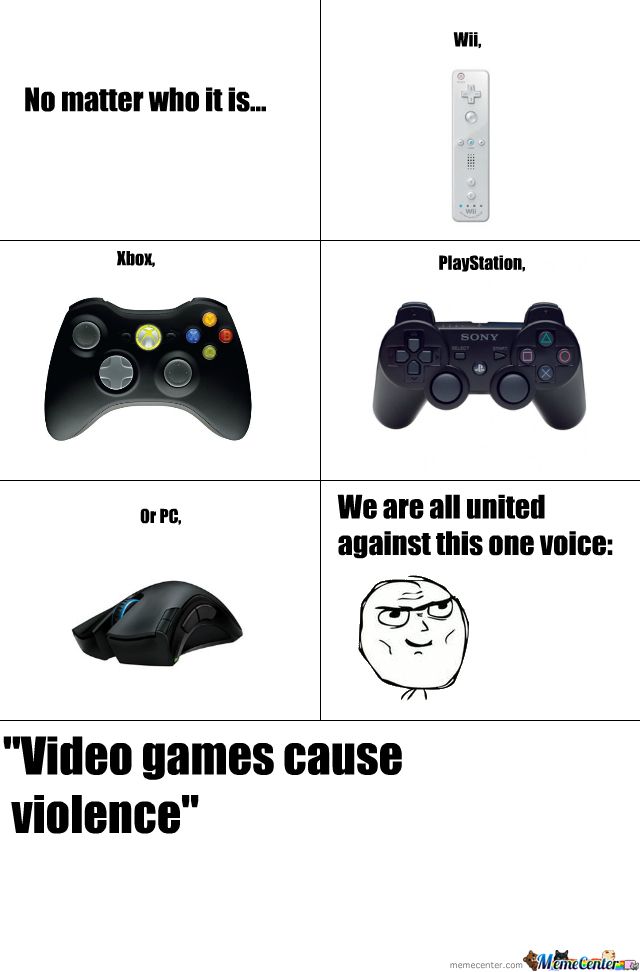 In his opinion, the other two are Marilyn Manson and a Calvin Klein underwear ad. Postal disappeared from stores, but still became a cult classic. In the second part of the game, which was released in 2003, the developers left "hello" to Lieberman - the senator is mentioned several times, and on the wall in one of the locations you can see the poster "Lieberman, God sees your lies."
In his opinion, the other two are Marilyn Manson and a Calvin Klein underwear ad. Postal disappeared from stores, but still became a cult classic. In the second part of the game, which was released in 2003, the developers left "hello" to Lieberman - the senator is mentioned several times, and on the wall in one of the locations you can see the poster "Lieberman, God sees your lies."
Another game that caused a lot of criticism from US officials was Doom. In 1999, there was a massacre at the Columbine School in Colorado. Two high school students, Eric Harris and Dylan Klebold, used guns and improvised explosive devices to kill 13 people and injure 20 more. Both young men were passionate about Doom and created custom levels for it. Over the years, US Presidents Bill Clinton, Barack Obama and Donald Trump have asked to check the connection between tragedies involving teenagers and the content of scenes of violence.
Relationship between violent games and aggression
After the tragedy at the Columbine School, various American researchers began to look for a connection between violent games and aggression that spills out in the real world.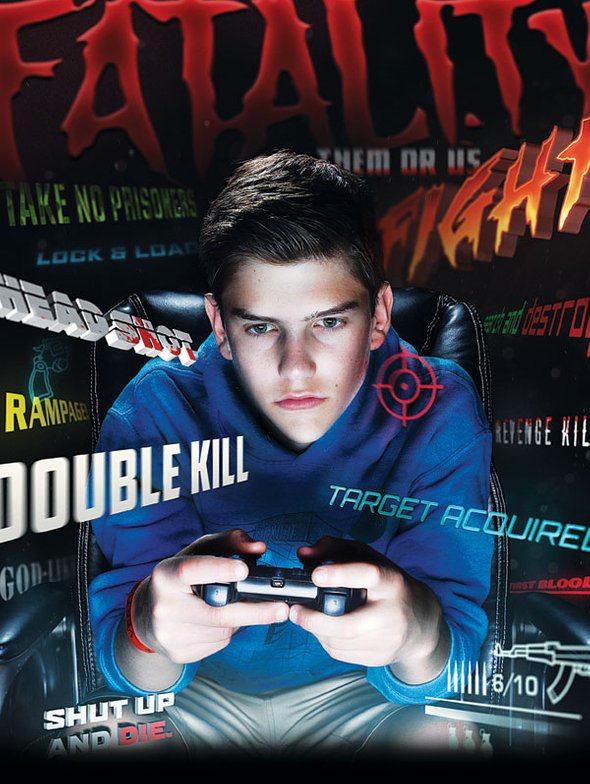 For example, in one of the first studies on this topic, University of Oklahoma professor Paul Lynch found that games affect initially hostile teenagers more than ordinary ones.
For example, in one of the first studies on this topic, University of Oklahoma professor Paul Lynch found that games affect initially hostile teenagers more than ordinary ones.
In 2007, psychology professor Douglas Gentile conducted a survey among schoolchildren and concluded that children who play violent video games have a 73% higher risk of developing increased aggressiveness compared to those who play both hard and quieter games. And in comparison with those students who do not play violent games at all, the figure is 263% higher.
One of the main critics of video games for violence has been Craig Anderson, a professor of psychology at the University of Iowa, who has been working on this issue since the early 2000s. According to him, violent games cause arousal and negative emotions, increase children's knowledge of how aggression works, and reduce social skills. The professor also found a connection between low grades and love of games. In a 2007 paper, he and colleague Brad Bushman compared the effects of video games on aggressiveness to cigarettes, which cause lung cancer.
In 2010, Anderson presented a study showing that games make children more aggressive, less caring, regardless of age, gender, or culture. For work, the professor analyzed 130 research reports from 130,000 examples from around the world. Another Anderson study from 2012 found that games had a stronger effect on young people's levels of aggression than living with abusive parents, violent TV content, low IQ, and substance use.
Family problems and bullying
Along with studies that showed a correlation between the level of aggression and violent games, scientific works began to appear that criticized this point of view.
In 2008, Stetson University psychology professor (formerly also at Texas A&M University) Christopher Ferguson accused one of Anderson's studies of misinformation and exaggeration. Later, Ferguson published several papers on the subject, defending games from accusations and emphasizing that the child is much more influenced by factors such as domestic violence.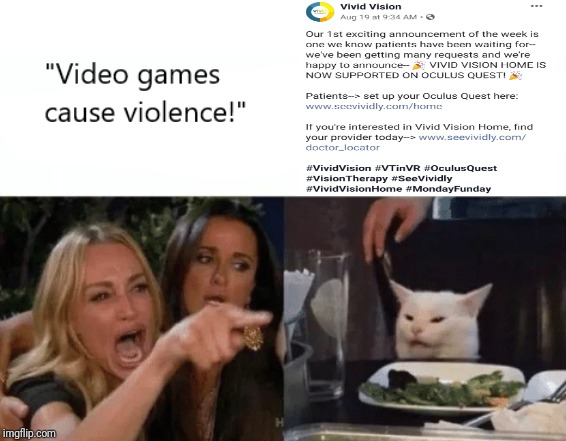
Illinois State University professor Joseph Hilgard has also repeatedly criticized Anderson for being biased. In his opinion, the short-term effect of aggression from games is much less than his opponent claimed in his works. In 2019, Hilgard and colleagues conducted a study in which 275 students (all men) played first-person shooters. At the end of the gaming session, the scientists found no tendency to aggressive behavior.
In 2014, Ferguson, together with psychologist and professor at the University of Münster, Malte Elson, presented a study that spans 25 years of studying the connection between video games and increased levels of violence. In it, they again criticized the ideas of Anderson, Bushman and other scientists, urging them to carefully present their arguments and not to panic. Elson and Ferguson emphasize that with each new generation, people are becoming less aggressive, despite the fact that they devote a lot of time to the Internet and games. According to researchers, the likelihood of aggressive behavior increases in the presence of external factors. For example, children who have experienced abuse from parents or peers are more likely to behave aggressively even when there is minimal stress.
For example, children who have experienced abuse from parents or peers are more likely to behave aggressively even when there is minimal stress.
In 2017, Ferguson, along with fellow psychologist Patrick Markey, published an article and later a book titled Moral Combat: Why War on Games is Wrong. In 2018, they wrote a column in Variety recounting the main points of the book and criticizing politicians for attacking video games.
“You can assume that violent video games increase minor forms of aggression by about 40-50%. Even if you are a little skeptical, you can assume that the effect is at least 10%. You are wrong. On average, studies show that, at best, only 0.4% of minor forms of aggression can be caused by video games,” Marki and Ferguson write.
According to the authors of the column, attitudes towards video games depend on the age of scientists - the older they are, the more confident that games affect the level of aggression . Markey and Ferguson also believe that politicians talk about the dangers of video games in order to distract citizens from gun control.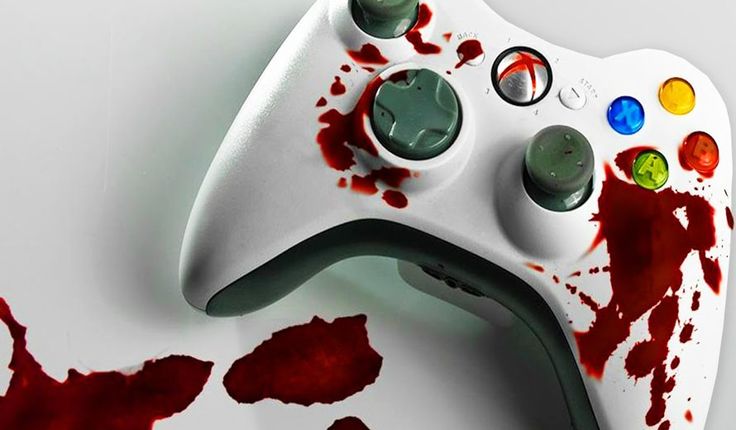
It’s not just the United States that advocates for games – Oxford University experts Andrew Przybylski and Netta Weinstein published a study in 2019 that found no connection between virtual and real violence. The authors of the work analyzed the results obtained from two thousand people. One group included 14- and 15-year-olds, and the other group included their parents and guardians. According to Przybylski and Weinstein, scientists who previously allegedly established a correlation are spreading panic and biased interpretation of the data.
Benefits of video games
Researchers who deny the connection between games and increased aggression find beneficial aspects of such leisure. For example, Lawrence Kutner and Cheryl K. Olson, authors of Grand Theft Childhood, write that play—including violence—helps children be more creative and has a positive effect on their social skills and emotional development. In addition, with the help of games, teenagers cope with stress and release rage.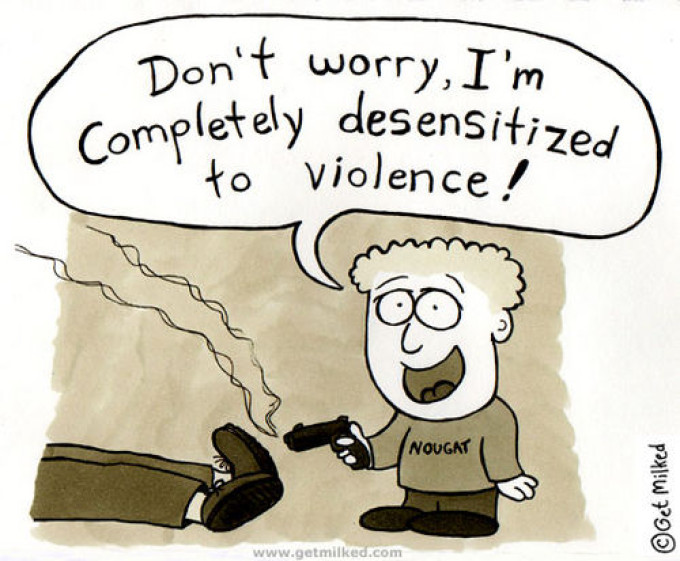
“By focusing on such a simple but unimportant goal as video game violence, parents and politicians are ignoring the more important and already known causes of violence, including social, behavioral, economic, biological and mental factors,” the authors of the book conclude.
In 2015, the Pew Research Center conducted a survey among teenagers who are addicted to video games. The children admitted that this pastime helps them to spend time with friends and make new ones. 36% of respondents said that they met new friends through games. Also, 89% of teenagers play with friends.
The socializing function of games manifested itself especially clearly during the lockdown that various countries experienced in 2020 and 2021 due to the coronavirus pandemic. Thanks to the Internet, children and teenagers could spend time with their peers at least in online games. Such leisure has replaced them with sports clubs, parks and playgrounds. Video games give players the opportunity to develop conflict resolution techniques, learn how to interact with friends, and experience different emotions.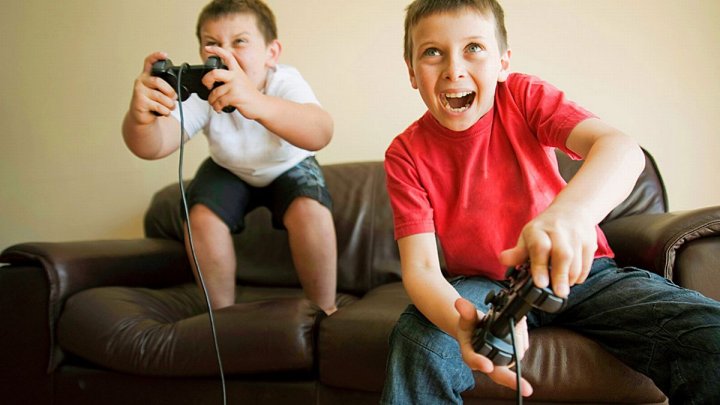
In addition, researchers believe that games with elements of violence not only do not provoke crimes in reality, but also reduce them, as they give relaxation. For example, a study by Scott Cunningham, Benjamin Engelstetter, and Michael R. Ward found a link between the popularity of interactive entertainment and a decrease in youth street crime. Scientists have come to the conclusion that gamers are losing interest in vandalism, robbery and robbery.
In 2014, Patrick Markey and his wife Charlotte Markey published a study that found a link between a decrease in crime and the release of new games in series such as Grand Theft Auto and Call of Duty.
Games have a positive effect on stress resistance. In Ferguson's The Hitman Study, students were given a difficult task, after which they were tested for their level of aggressiveness. It turned out that subjects who preferred violent video games felt less depressed and dissatisfied than students who did not enjoy such games.